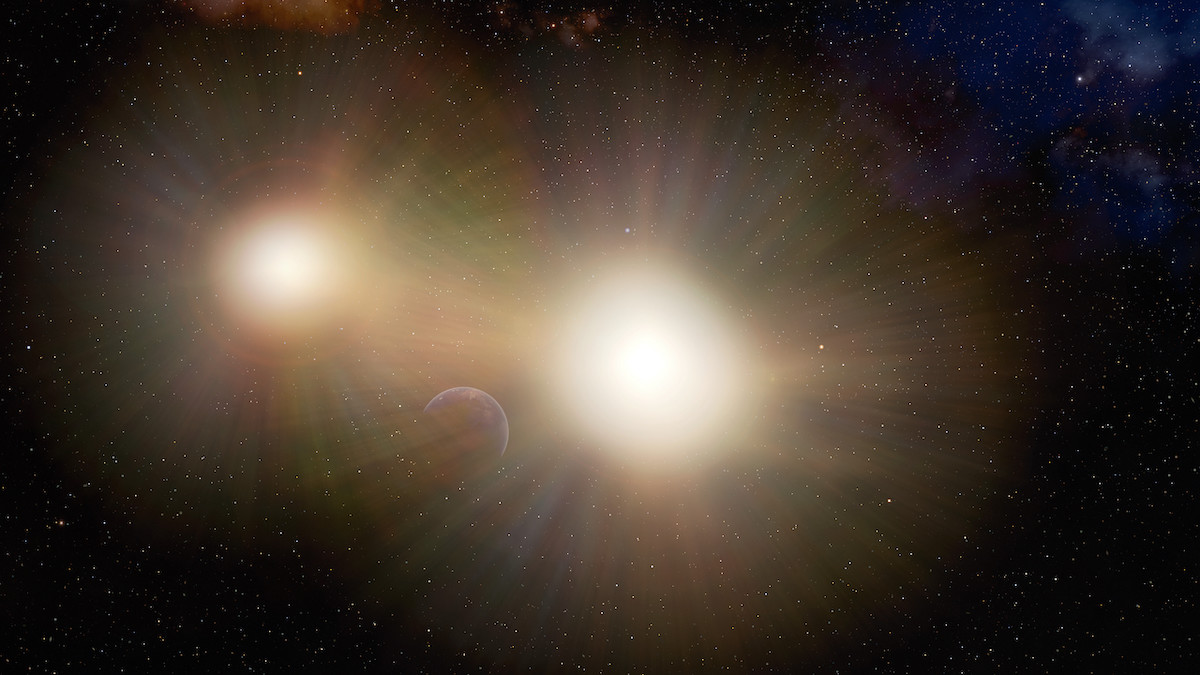Unlock the secrets of the cosmos by exploring double stars – a captivating phenomenon that offers a unique glimpse into the universe’s beauty and complexity.
Introduction: Embracing the Celestial Duets
Gazing up at the night sky, one cannot help but be filled with wonder and awe. For centuries, humanity has been drawn to the heavens, seeking to understand the vast expanse that surrounds us. Among the myriad celestial wonders, double stars shine as a reminder of the universe’s intricate choreography. In this comprehensive guide, we’ll delve into the captivating realm of double stars, unraveling their mysteries and providing practical insights for observing these mesmerizing celestial duets.
Understanding Double Stars: Nature’s Binary Companions
Double Stars Unveiled
Double stars, often referred to as binary stars, are captivating systems comprising two stars that orbit a common center of mass. Unlike their solitary counterparts, these binary companions engage in a celestial dance, intertwining their destinies as they gracefully twirl around each other. From afar, they may appear as a single point of light, but a closer look unveils the captivating complexity of their interaction.
Varieties of Double Stars
The universe is a treasure trove of diversity, and double stars are no exception. They manifest in various forms, each offering its own unique insights into the cosmos.
- Optical Doubles: These stars might appear aligned from our vantage point, but they are not physically connected. Their apparent proximity is a trick of perspective, as they may be vastly different in distance and luminosity.
- Visual Binaries: True binary stars, these pairs share a gravitational bond, revolving around a common center. Observing their orbital motion over time provides a rare glimpse into celestial mechanics.
- Spectroscopic Binaries: Some double stars are so close together that even advanced telescopes cannot resolve them as distinct points of light. Instead, their combined spectrum reveals their binary nature through shifts and variations.
- Eclipsing Binaries: In these systems, one star periodically eclipses the other as seen from Earth, causing fluctuations in brightness. These variations yield essential information about the stars’ properties.
The Thrill of Observing Double Stars
Equipping Yourself for Astronomical Exploration
Embarking on a journey to observe double stars requires the right tools. A telescope, your trusty celestial companion, is a necessity. Choose a telescope with a respectable aperture (at least 70mm) to gather sufficient light and detail. Mount stability and quality eyepieces are crucial for a comfortable and immersive observation experience.
Selecting Ideal Observation Sites
City lights can obscure the celestial spectacle, so seek out dark-sky locations for optimal viewing. Remote areas away from urban glare, like open fields or elevated terrains, offer the perfect canvas for observing double stars in their full splendor.
Mastering Observation Techniques
- Spotting Double Stars: Begin your journey by familiarizing yourself with star charts or planetarium apps. These tools help you locate double stars in the night sky. Use binoculars to identify pairs that might be too close to discern with the naked eye.
- Achieving Telescope Focus: Once you’ve identified a double star, align your telescope and focus it carefully. Adjust the focus until both stars emerge as sharp points of light, a testament to the telescope’s precision.
- Optimal Magnification: Depending on the stars’ separation, experimenting with magnification can provide differing perspectives. Higher magnification reveals finer details, but remember that excessively high magnification can compromise clarity.
- Noting Color Contrasts: Observe the colors and brightness disparities between the stars. This contrast can range from subtle to striking, enhancing the depth of your observation.
- Maintaining Observation Records: Capture your observations in a dedicated journal. Document the date, time, telescope settings, and your impressions. Over time, you may notice changes in positions or luminosities that contribute to the ever-evolving understanding of these celestial duets.
Exploring Captivating Double Stars
Albireo (Beta Cygni): The Golden and Sapphire Pair
Nestled within the Cygnus constellation, Albireo dazzles observers with its contrasting hues. While the naked eye perceives it as a single point, a telescope unveils its hidden beauty. The primary star emits a warm golden glow, while its companion emanates a vibrant sapphire-blue radiance. This stunning visual contrast transforms Albireo into a cosmic masterpiece, igniting the imagination of stargazers across cultures and generations.
Epsilon Lyrae (The Double-Double): A Celestial Quadrille
Located in the constellation Lyra, Epsilon Lyrae, aptly nicknamed the Double-Double, presents a breathtaking spectacle. At lower magnifications, it appears as a single star, but upon closer examination, each star separates into another binary pair. This intricate arrangement showcases the dynamic interplay of gravity and motion, providing a glimpse into the intricate cosmic ballet that unfolds in the night sky.
Mizar and Alcor (Zeta Ursae Majoris): Guiding Stars of the Dipper
The Big Dipper’s handle boasts the iconic pair Mizar and Alcor. Mizar’s brilliance is enhanced by its spectroscopic binary nature, making it a quintuple star system when Alcor is considered. Throughout history, these guiding stars have navigated travelers and ignited imaginations. They once served as a simple yet effective test of visual acuity – discerning both stars signaled exceptional eyesight.
Conclusion: Pioneering the Cosmic Odyssey
In the canvas of the night sky, double stars offer a unique avenue to explore the universe’s intricacies. Their gravitational waltzes, radiant colors, and nuanced arrangements invite us to contemplate the vastness and beauty of space. With each observation, we not only unlock celestial secrets but also contribute to the ongoing narrative of human understanding. So, embrace the night, grasp your telescope, and embark on a journey that unites us with the cosmos.
May your nights be filled with starlit revelations and celestial enchantment. Happy stargazing!

